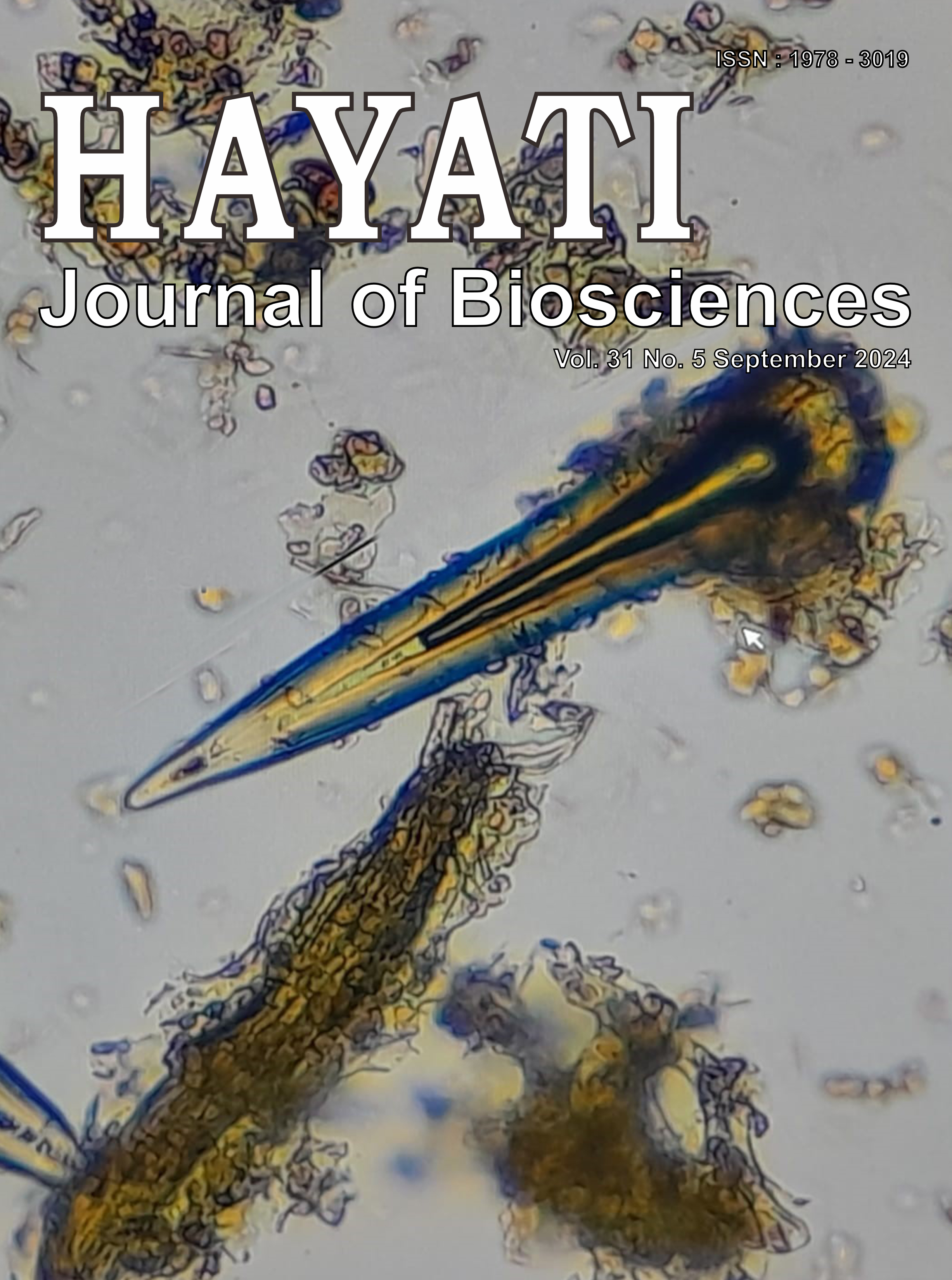Population Dynamics of Mangrove Clam Pegophysema philippiana (Reeve, 1850) in Davao Region, Southeastern Mindanao, Philippines
Abstract
Mangrove clam is the most sought-after bivalve in the Philippines due to its taste, size, and nutrition. Due to its economic importance, this paper aims to determine the population dynamics of mangrove clam P. philippiana harvested in gleaning sites in the Davao region using the FAO ICLARM Stock Assessment Tool (FISAT II). A total of 2493 clams collected from December 2018-December 2020 with sizes ranging from 14-84 mm SL and 2.2-178.6 g were classified according to size classes with 5 mm intervals. The length-weight relationship was computed and showed negative allometry (a = 0.002, b = 2.6205, R2 = 0.89). The estimated growth parameters using ELEFAN I was L∞ = 98.64 mm, K = 1.33 year-1, t0 = -1.07. Length converted catch curve routine estimated Z = 10.27year-1, M = 1.52 year-1, F = 8.75 year-1, E = 0.85, and backward extrapolation generated Lc50 = 34.83 mm SL which is below Lm = 65.76 mm SL. Recruitment patterns were highest during July and August 2020, and VPA showed a high F at 60 mm SL. Beverton and Holt Y/R analysis showed E0.5 = 0.328 and Emax = 0.551, yield isopleths derived from plotted Lc50/L∞ = 0.353 and E = 0.85 values were within quadrant D. The result revealed that Lm>Lc50 implies that mangrove clams gleaned in the area were small and immature. Moreover, F>Fopt and E>Emax and E>E0.5 suggest that mangrove clam fishery in the region was heavily exploited. The study concluded that the mangrove clam Pegophysema philippiana was overexploited and that a management strategy was needed in the Davao Region, Philippines.
Downloads
Copyright (c) 2024 Michael Jeriel I. Bersaldo, Marlyn B. Llameg, Pedro M. Avenido, John Paul R. Pacyao, Jessa May D. Marquez

This work is licensed under a Creative Commons Attribution-NonCommercial 4.0 International License.
HAYATI J Biosci is an open access journal and the article's license is CC-BY-NC. This license lets others distribute, remix, tweak, and build upon author's work, as long as they credit the original creation. Authors retain copyright and grant the journal/publisher non exclusive publishing rights with the work simultaneously licensed under a https://creativecommons.org/

























.png) IPB University
IPB University Department of Biology
Department of Biology The Indonesian Biological Society
The Indonesian Biological Society 

